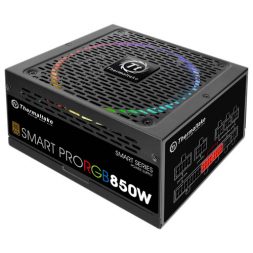No one likes buying components that don’t do anything exciting, and your power supply is at the top of the list of boring components. Boring, that is, until your gaming PC grinds to a halt under the electricity demand that your fancy new video card is making. When the game stops and your PC shuts off suddenly, your power supply becomes infinitely more interesting. I hate the idea of my rig running poorly (or not at all) because of an inadequate part. Here’s a quick overview of what I consider when shopping for a power supply.
What’s inside your case?
I know it may sound like a silly place to start, but ask yourself if you have a full list of the components you have in your case. It’s easy to overlook additional media or hard drives, and the last thing you want when you upgrade your PC power is to discover you don’t have enough connections to run everything. You should also chart out your upgrade path over the next few years, with a focus on video cards. If you’re planning to run a pair of high-end video cards linked together, you will need a considerable amount of power on call.
Raw power
When I talk about power, I’m talking about watts. If you don’t have enough wattage available when your PC calls for it, the system will shut off, and you know that is terrible for the more delicate parts of your PC. Most of us don’t have an accurate estimate of how much power our gaming PC needs, but don’t worry. Most manufacturers have power supply calculators on their respective websites. You plug in your components and expected usage, and it pops out an estimated wattage need.
Efficiency
The wattage rating of your power supply is the peak amount that it can ever provide. There’s more to the story, though. That total amount is not the full amount that the power supply draws from your household circuit. Like any electrical device, there is energy lost in the process. Power supplies are rated on how much energy is lost to heat, using the 80 PLUS® certification system. 80% efficiency is the baseline. If your 400-watt power supply is 80% efficient, then it’s actually using 500 watts of electricity at full load. And unless you have free electricity, you want to minimize the wasted amount as much as possible. The Antec High Current Pro is 80 PLUS® PLATINUM certified, which means at peak load it is 89% efficient. Until there’s a miraculous scientific breakthrough, there’s no such thing as a lossless power supply. In the meantime, saving as much electricity as you can is a smart idea.
Modular power supply
I could make an argument against modular power supplies, I suppose, but it would be a waste of effort. If you build your own PC, you need to use a modular power supply. These wondrous beauties let you choose which power cables are connected. Ribbons of unused power cables crammed against the frame of your PC case are a thing of the past. The space inside of your PC is at a premium, and wasting it on unused power cables makes no sense at all. The only potential downsides to modular models concern the cables. The manufacturer may only include a minimum of cables, so you’d have to buy additional cables when you needed them. And a few manufacturers use proprietary cables, which means the cables would be useless if you switched to a different manufacturer’s power supply in the future.
How big is your case?
If you are one of the brave few PC gamers who built their computer in a small form factor or a mini tower case, I salute you. I like to have the wide-open space of a full tower ATX case. The concept of choosing a restricted space and then trying to fill it with my desired components is alien to me. More space inside your PC means better airflow and less contact between components. Your power supply options for a small form factor case are fewer, but you can still find the right one with a little bit of effort. The Corsair SF Series Power Supply manages to push out 600W of power and is 80 PLUS® GOLD certified. The number of connectors is limited, but that’s to be expected in a small form factor.
Protecting your investment
We don’t live in a perfect world, and things break. You can get a good estimate on how long a company expects a product to last by the length of warranty it offers. A power supply with a one year warranty may last a decade, but I wouldn’t gamble on it. Your upgrade budget should either plan to invest in a power supply with a 5+ year warranty, or plan to replace it every couple of years. I prefer the option that doesn’t involve disassembling and reassembling my PC. I am not much of a gambler when it comes to anything electrical.
You are wondering why I would spend any time talking about way an internal component looks. Wonder no more! PC cases with transparent side panels are becoming more and more common on the custom PC scene. If you’re going to let the world see the guts of your gaming PC, why not make it as pretty as possible? A power supply that has Led lights like the Thermaltake Toughpower Grand RGB add some pizzazz to your PC. And you can buy colourful power cables to take it to the next level of grandiosity. Express yourself!
Into PC gaming in a big way? Best Buy has graphics cards, motherboards, power supplies and anything else you might need to build or upgrade your gaming PC.










